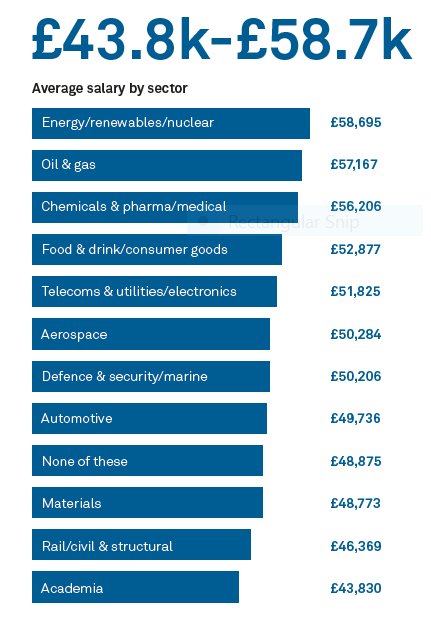
As an engineering specialist, you will perform tasks related to a specific field. Level 1 positions usually require intermediate knowledge of concepts and practices within the field. As you climb the ranks, you will be expected to perform advanced tasks related the skills or applications of your field. Continue reading to find out more about the different engineering specialist positions. Here are some of their responsibilities. These positions are for engineers who are interested in a career as a specialist.
Level 1 positions require intermediate level knowledge of concepts, practices and procedures in a particular field.
This job requires intermediate knowledge. Typical tasks include lifting, typing, and standing. You must include details about the required qualifications and experience in your job description. This job description may be written either by an employer or the applicant. It describes the job's responsibilities and the skills required to do the job.

Engineers must evaluate the benefits and costs to choose the best design option. Engineers must understand the constraints that are imposed on their designs in order to determine the best solution. They also use computers to create designs, test them, and monitor and control the efficiency of processes. A computer can be used to assist them in any type of mechanical project.
Level 2 positions require intermediate tasks in specific skill areas/applications
As an entry-level professional in an engineering profession, you will learn to perform professional tasks under supervision and perform routine developmental assignments. You will also be required to make limited decisions and use judgment. You will need a bachelor's in order to be able supervise closely. You will need intermediate knowledge in this field. You will also need to have exceptional communication and problem-solving abilities.
As a Civil Engineering Specialist 3, there are many types of civil engineering work you can do, such as planning and analyzing projects, and following established practices. The Civil Engineering Specialist 3 will oversee the development of survey plans and projects that require extensive engineering. Other responsibilities include coordinating budgets, overseeing the implementation of project plans, and liaison work with agencies.
Level 4 positions require advanced tasks in specific skill areas/applications
Engineering specialist level 4 has different requirements than entry-level professionals. Level one positions require the individual to have a working knowledge of the subject matter and be able to perform basic work applications. They must demonstrate the ability to communicate clearly and carry out team responsibilities. They must also be able to apply standards and guidelines and implement safe working practices. A level 1 position is typically subject to close supervision.

The job duties of engineers specialist level 4 positions require that you complete complex projects using the most recent software. Candidates should be analytical, detail-oriented and creative. Engineers need to be able interact well with others and work in a collaborative environment. Increasingly, engineers must have excellent communication skills in order to be successful in their career. Federal employees must also be U.S. citizens and have security clearances.
FAQ
How long does it take to become an Engineer?
There are many ways to get into engineering. Some people study immediately after high school graduation, while others go to college to further their education.
Some students will choose to enter a degree program right out of high school. Others will opt for a foundation program that lasts two years.
They may then continue to a three-year or four-year honors programme. Alternately, they might choose to get a master's.
It is important to consider your future plans once you have graduated. Will you want to stay in education or move into industry?
The time taken to complete each stage will vary depending on what university you go and whether you're taking a full or part-time course.
There is no direct correlation between the time it takes to complete a qualification and the experience you have after graduation. Even though you may only have one year of college, this doesn't guarantee that you will be able to use all the skills required to work as an engineer.
What do civil engineers do?
Civil engineering deals with the construction and design of large-scale structures, such as bridges, roads, buildings, dams and tunnels. It encompasses all aspects structural engineering. This includes foundations and geotechnics, hydrotechnics, soils, safety analysis and environmental impact assessment. Civil engineers ensure that the project meets all its objectives and is cost-effective as well as environmentally friendly. They have to ensure that the structure will be safe and lasts.
They are also responsible for planning and implementing public works programs. They may oversee, for example, the design and construction of roads, bridges or tunnels.
Which engineering task is the most difficult?
The most difficult engineering problem is to design a system capable of handling all possible failure modes. However, it must also be flexible enough so that future changes can take place.
This requires a lot of testing and iteration. It is also important to understand how the system should respond when something goes wrong. This is where you must ensure you aren't solving just one problem.
Statistics
- Job growth outlook through 2030: 9% (snhu.edu)
- 8% Civil engineers solve infrastructure problems. (snhu.edu)
External Links
How To
How to read engineering drawings
Engineering drawings are a visual representation of an object. They contain many elements such as dimensions, symbols, text, etc. Since ancient times engineering drawings have been in existence. The first known drawing was made in Egypt during 3000 BC. They are used by engineers to design things like bridges, buildings and machines.
Engineers use engineering drawings when they want to explain what something looks like. It aids others in understanding what you're talking. Engineers create things using numbers and symbols to indicate measurements. This makes it simpler for people who don’t understand engineering.
There are 2D and 3D types of engineering drawings.
2D drawings can be flat representations or three-dimensional objects. These include plans and sections, elevation views and axonometric projecteds.
3D drawings show real-life objects from multiple angles. They are usually created by computer software. SketchUp is a program that allows you to visualize the structure of a bridge from above. Then, select "View" then choose "Top view." Next, rotate your view so that you can see everything from the top.
2D drawings should be viewed in the entirety. Do not focus on one aspect. Be sure to look at the entire area, even if it is just in one corner.